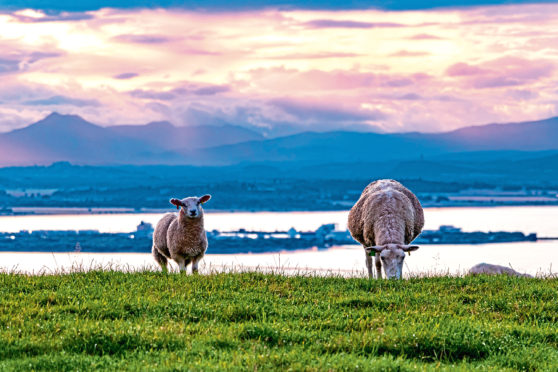Professor Davy McCracken of SRUC offers an insight into work at the rural college’s hill and mountain research centre
The UK and Scotland may have officially left the European Union, but my team at Kirkton and Auchtertyre remains heavily involved in projects focused on improving European livestock system sustainability.
And I am pleased to say we have been successful in winning funding for another project which starts in September.
TechCare is a four-year European Union funded project which aims to develop business models using innovative technologies to improve welfare management for all EU small ruminant systems.
Precision livestock farming (PLF) technologies have been widely adopted in the management of high-value animals such as dairy cattle.
And many commercial companies have already developed PLF applications for industrialised farming, such as those associated with pig and poultry production.
However, the development of PLF technologies for livestock species deemed to have lower individual economic value – such as sheep and goats within grazing systems – has been slow.
This is despite the significant advantages that could be achieved by applying these technologies to improve both management and welfare.
The project is led by Claire Morgan-Davies in our hill and mountain research centre and involves 18 other partners drawn from across Europe and Israel.
In addition to my team co-ordinating and inputting to the research across the consortium, there will also be two PhD students funded here in Scotland.
The first will focus on behavioural and other welfare indicators to assess and validate the usefulness of different PLF approaches for managing animal welfare.
The successful student will work with SRUC’s animal behaviour and welfare team at the Bush Estate outside Edinburgh and the Moredun Research Institute.
They will be registered at University of Edinburgh, Royal (Dick) School of Veterinary Studies, where they will also be part of the Jeanne Marchig International Centre for Animal Welfare Education.
The second will help identify and test PLF technologies that could be used for monitoring and improving performance, health and welfare in different sheep grazing systems.
A selection of these technologies will be tested in-situ on farms in Scotland – including Kirkton and Auchtertyre – to evaluate, in a flock environment, their potential and suitability for addressing different management and welfare aspects.
The successful student for this second PhD will work directly with Claire and my team at Crianlarich and colleagues at the Moredun Research Institute. They will be registered at the University of Glasgow’s College of Medical, Veterinary and Life Sciences.
